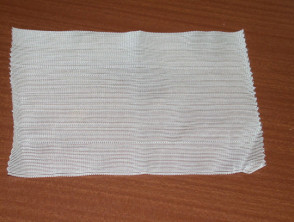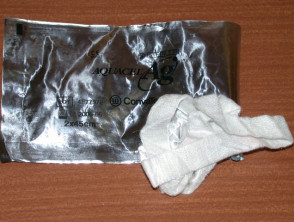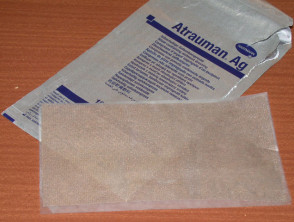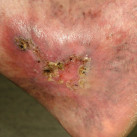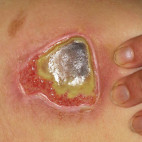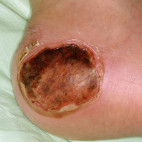Introduction
Synthetic wound dressings originally consisted of two types; gauze-based dressings and paste bandages such as zinc paste bandages. In the mid-1980s the first modern wound dressings were introduced which delivered important characteristics of an ideal wound dressing: moisture keeping and absorbing (e.g. polyurethane foams, hydrocolloids) and moisture keeping and antibacterial (e.g. iodine-containing gels).
During the mid 1990s, synthetic wound dressings expanded into the following groups of products:
- Vapour-permeable adhesive films
- Hydrogels
- Hydrocolloids
- Alginates
- Synthetic foam dressings
- Silicone meshes
- Tissue adhesives
- Barrier films
- Silver- or collagen-containing dressings.
Silver containing dressings
Ideal wound dressing
No single dressing is suitable for all types of wounds. Often a number of different types of dressings will be used during the healing process of a single wound. Dressings should perform one or more of the following functions:
- Maintain a moist environment at the wound/dressing interface
- Absorb excess exudate without leakage to the surface of the dressing
- Provide thermal insulation and mechanical protection
- Provide bacterial protection
- Allow gaseous and fluid exchange
- Absorb wound odour
- Be non-adherent to the wound and easily removed without trauma
- Provide some debridement action (remove dead tissue and/or foreign particles)
- Be non-toxic, non-allergenic and non-sensitising (to both patient and medical staff)
- Sterile.
Classification of wound dressings
Synthetic wound dressings can be broadly categorized into the following types.
| Type | Properties |
|---|---|
| Passive products | Traditional dressings that provide cover over the wound, eg gauze and tulle dressings |
| Interactive products | Polymeric films and forms which are mostly transparent, permeable to water vapour and oxygen, non-permeable to bacteria, eg hyaluronic acid, hydrogels, foam dressings |
| Bioactive products | Dressings which deliver substances active in wound healing, eg hydrocolloids, alginates, collagens, chitosan, keratin |
Wound types and dressings
The following table describes some of the many different types of wound dressings and their main properties.
| Dressing type | Properties | |
|---|---|---|
| Gauze |
|
 |
| Tulle |
|
 |
| Semipermeable film |
|
 |
| Hydrocolloids |
|
 |
| Hydrogels |
|
 |
| Alginates |
|
 |
| Polyurethane or silicone foams |
|
 |
| Hydrofibre |
|
 |
| Collagens |
|
Different types of wounds and the different stages of a healing wound require different dressings or combinations of dressings. The following table shows suitable dressings for particular wound types.
| Wound type | Dressing type | |
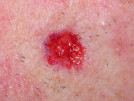 |
Clean, medium-to-high exudate (epithelialising) |
|
|
|
Clean, dry, low exudate (epithelialising) |
|
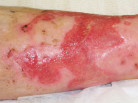 |
Clean, exudating (granulating) |
|
| Slough-covered |
|
|
| Dry, necrotic |
|
The dressings may require secondary dressings such as absorbent pad and bandages.
Adverse effects of dressings
Wound dressings can cause problems, including:
- Maceration (sogginess) of surrounding skin (change dressing frequently and use a more absorbent dressing)
- Irritant contact dermatitis (protect skin with emollient or barrier film)
- Allergic contact dermatitis (uncommon: change dressing type, apply topical steroids)
